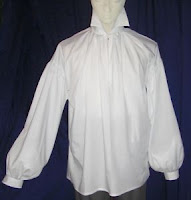Everyone
loves food so it’s no surprise the Regency was brimming with lots of tasty and
unique dishes. In this post, we look at a typical day’s menu in the Regency
period and discuss all the delicious food Regency folk ate! Get ready to get
hungry!
A typical day’s menu in the
Regency
- Breakfast, served at about 9 am in the morning would include toast, rolls, cheese with hot chocolate, coffee or tea (Evans).
- Lunch didn’t really exist back then though refreshments were served in the middle of the day and included cold meats, sandwiches and fruits (Black & Le Faye, 1995).
- Dinner was usually served at about 5 pm in the evening and in the upper classes was usually made up of at least two courses, not including dessert. A list of possible food you would find, adapted from The Jane Austen Cookbook (Black & Le Faye, 1995):
 |
| Regency family at dinner |
1.
First
Course: Turtle Soup, Vegetables, Salmon, Fowls, Spinage, Bacon, Mutton, Beef, Lobster
2.
Second
Course: Ragout (stew), Goose, Venison, Pastry, Celery, Macaroni, Peas
3.
Dessert:
Nuts, Cakes, Sweetmeats, Fruits, Custard, Pudding, Syllabub (whipped cream
lightly mixed with wine), Ice Cream
- Tea: Served one hour after dinner: includes pastries, cakes
- Supper: At 11pm at night and usually came with cold meats and wine
 |
| Regency Desserts |
Different
types of wine was normally served with every course no one drank water as it was
considered unsafe and fresh milk was usually contaminated (Pool, 1993).
 |
| Real life regency menu! |
How did people get their ingredients?
There
was no such thing as refrigeration in the Regency which meant food spoiled
fast. So housewives or kitchen maids would a lot of time in the summer salting
and pickling food so it would last longer (Black & Le Faye, 1995).
Ingredients
was either grown in one’s own garden, hunted as a sport by gaming gentlemen,
imported (thought this was expensive) or more commonly bought at a food market (Olsen, 2005).
 |
| The British Butcher |
Just For Fun:
Try
making your own Regency ragout and syllabub dessert with these two simple
recipes! Click on the pictures to get links!
 |
| Regency ragout |
 |
| Lemon Syllabub |
Sources:
(1995). Social and Domestic Life in Jane Austen's time. In M.
Black, & D. Le Faye, The Jane Austen Cookbook (pp. 8-18). Toronto:
McClelland & Stewart.
(2005). ACQUISITION. In K. Olsen, Cooking
with Jane Austen (pp. 1-6). Westport: Greenwood Publishing Group.
Evans, D. L. (n.d.). Celtnet
Georgian/Regency Period Recipes and Cookery, Home Page. Retrieved May 17,
2012, from Celtnet Recipes:
http://www.celtnet.org.uk/recipes/georgian-recipes.php
Pool, D. (1993). Sir, Can I Have Some
More. In What Jane Austen Knew and Charles Dickens Ate. New York:
Touchstone.



















